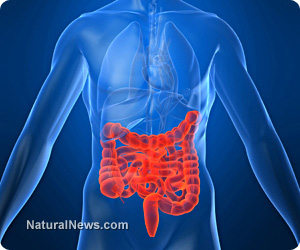Obese men don't do much better, breaking a sweat only 3.6 hours annually, researchers say
A new study suggests that obese women get just one hour of vigorous exercise a year, while obese men don't do much better at fewer than four hours.
The findings startled the researchers, whose main focus was finding better ways to measure how much exercise people get.
"They're living their lives from one chair to another," said Edward Archer, a research fellow with the Nutrition Obesity Research Center at the University of Alabama at Birmingham. "We didn't realize we were that sedentary. There are some people who are vigorously active, but it's offset by the huge number of individuals who are inactive."
According to the U.S. Centers for Disease Control and Prevention, more than one in three people in the United States is obese, a step above being overweight. Obesity boosts the risk of cardiovascular problems such as heart disease and stroke, diabetes and some cancers.
One expert did note that the definition of vigorous exercise was very limited in the study, and the researchers themselves acknowledged that the device used to track physical activity did not measure swimming or biking very well.
In the new study, researchers examined the results of a 2005-2006 government survey of adults aged 20 to 74. Among other things, the survey tracked the weight, diet and sleep patterns of nearly 2,600 adults.
Accelerometer devices were used to track their movements, providing insight into how much they exercised.
The study defined "vigorous" exercise as activities that burn fat like jogging and jumping rope, but not sexual activity. According to Archer, who was at the University of South Carolina when the study was conducted, sex isn't as much of a fat-burning activity as certain other kinds of exercise so it doesn't qualify as vigorous.
The researchers found that the average obese woman gets the equivalent of about one hour of exercise a year. For men, it's 3.6 hours a year.
"The data was there, but no one looked at it and parsed it the way we did," Archer said. In the big picture, "there is a great deal of variability; some are moving probably a fair amount. But the vast majority [of people] are not moving at all."
What kind of lives are the most inactive people living? "I think they're living the typical life. They drive their children to school, they sit at a desk all day long, they may play some video games and they go to sleep," Archer said.
John Jakicic, chair of the department of health and physical activity at the University of Pittsburgh, praised the study but cautioned that its definition of "vigorous" is limited and not based on a person's fitness level. For some very obese people, for instance, just general walking could be considered vigorous, he explained.
What to do?
As little as 30 minutes of exercise five days a week can stop weight gain and improve health, study author Archer said. "People don't understand that [you] don't have to go to the gym and lift weights and run marathons to have dramatic impacts on your body. Standing rather than sitting, walking rather than taking your car, they have huge impacts on your health over time."
Jakicic agreed that little changes can have a big difference. "Traditional exercise approaches are not the way to try to get obese people active -- the barriers are just too great," he said. "However, we showed a number of years ago that encouraging multiple brief periods -- five to 10 minutes two to three times per day -- was an effective way to get individuals active initially. Once they started to become more active in this way, they started to add even more activity."
The study appeared recently in the Mayo Clinic Proceedings.
Source: webmd.com
A new study suggests that obese women get just one hour of vigorous exercise a year, while obese men don't do much better at fewer than four hours.
The findings startled the researchers, whose main focus was finding better ways to measure how much exercise people get.
"They're living their lives from one chair to another," said Edward Archer, a research fellow with the Nutrition Obesity Research Center at the University of Alabama at Birmingham. "We didn't realize we were that sedentary. There are some people who are vigorously active, but it's offset by the huge number of individuals who are inactive."
According to the U.S. Centers for Disease Control and Prevention, more than one in three people in the United States is obese, a step above being overweight. Obesity boosts the risk of cardiovascular problems such as heart disease and stroke, diabetes and some cancers.
One expert did note that the definition of vigorous exercise was very limited in the study, and the researchers themselves acknowledged that the device used to track physical activity did not measure swimming or biking very well.
In the new study, researchers examined the results of a 2005-2006 government survey of adults aged 20 to 74. Among other things, the survey tracked the weight, diet and sleep patterns of nearly 2,600 adults.
Accelerometer devices were used to track their movements, providing insight into how much they exercised.
The study defined "vigorous" exercise as activities that burn fat like jogging and jumping rope, but not sexual activity. According to Archer, who was at the University of South Carolina when the study was conducted, sex isn't as much of a fat-burning activity as certain other kinds of exercise so it doesn't qualify as vigorous.
The researchers found that the average obese woman gets the equivalent of about one hour of exercise a year. For men, it's 3.6 hours a year.
"The data was there, but no one looked at it and parsed it the way we did," Archer said. In the big picture, "there is a great deal of variability; some are moving probably a fair amount. But the vast majority [of people] are not moving at all."
What kind of lives are the most inactive people living? "I think they're living the typical life. They drive their children to school, they sit at a desk all day long, they may play some video games and they go to sleep," Archer said.
John Jakicic, chair of the department of health and physical activity at the University of Pittsburgh, praised the study but cautioned that its definition of "vigorous" is limited and not based on a person's fitness level. For some very obese people, for instance, just general walking could be considered vigorous, he explained.
What to do?
As little as 30 minutes of exercise five days a week can stop weight gain and improve health, study author Archer said. "People don't understand that [you] don't have to go to the gym and lift weights and run marathons to have dramatic impacts on your body. Standing rather than sitting, walking rather than taking your car, they have huge impacts on your health over time."
Jakicic agreed that little changes can have a big difference. "Traditional exercise approaches are not the way to try to get obese people active -- the barriers are just too great," he said. "However, we showed a number of years ago that encouraging multiple brief periods -- five to 10 minutes two to three times per day -- was an effective way to get individuals active initially. Once they started to become more active in this way, they started to add even more activity."
The study appeared recently in the Mayo Clinic Proceedings.
Source: webmd.com





























